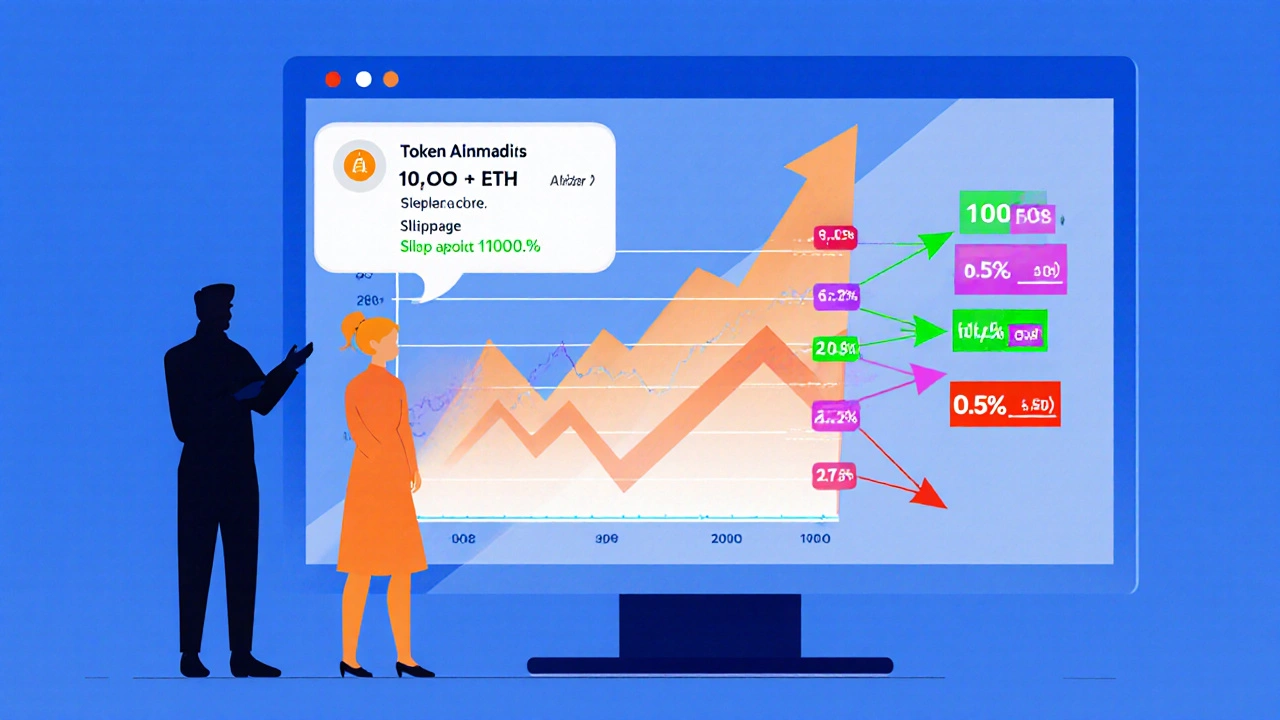Key Takeaways
- MEV (Maximal Extractable Value) is the profit miners or validators can capture by reordering, inserting, or censoring transactions within a block.
- Ethereum’s transition to proof‑of‑stake introduced validators, but the core MEV dynamics stay the same.
- Common MEV strategies include front‑running, sandwich attacks, arbitrage, and liquidation extraction.
- Tools like Flashbots and proposer‑builder separation (PBS) aim to make MEV more transparent and fair.
- Regular users can reduce exposure by using private transaction relays, setting appropriate slippage limits, and monitoring gas fees.
When you hear the term MEV is a protocol-level phenomenon that lets block producers capture extra profit by manipulating transaction order, inclusion, or timing on Ethereum, you might wonder why it matters to anyone who isn’t a miner or validator. In short, MEV influences gas prices, transaction latency, and even the security of the whole network. Understanding how it works helps you spot hidden fees, avoid costly sandwich attacks, and decide whether a private transaction relay is worth the extra step.
What Exactly Is MEV?
MEV, short for Maximal Extractable Value, was originally called Miner Extractable Value before Ethereum moved to proof‑of‑stake. The definition stays the same: it’s the most extra profit a block producer-whether a miner in PoW or a validator in PoS-can squeeze out of the ordering of transactions inside a single block.
On Ethereum, every block contains a batch of transactions that users submit to the network. The block producer decides the exact sequence, can drop some transactions, or even add their own. Any profit that comes from these choices-beyond the normal block reward and base fee-is counted as MEV.
How Does MEV Actually Happen?
Imagine a decentralized exchange (DEX) where the price of Token A is about to jump because a large buy order is about to hit. A validator sees that pending transaction in the mempool, inserts their own buy order right before it, and then sells a fraction higher right after. The profit from that price swing is MEV.
The process breaks down into three steps:
- Observation: The block producer watches the pending transaction pool (the mempool) for lucrative opportunities.
- Manipulation: They reorder, insert, or censor transactions to create a profitable sequence.
- Extraction: The extra profit is realized once the block is finalized.
This is why gas prices can spike during high‑frequency trading moments-validators are competing to claim the same MEV opportunity.

Common Types of MEV
Not all MEV looks the same. Below are the four most frequent patterns you’ll encounter on Ethereum, each with its own impact on users.
| Strategy | What Happens | Typical Victim | Profit Source |
|---|---|---|---|
| Front‑running | Block producer inserts a transaction right before a user’s trade. | Trader who posted the original order. | Price differential between pre‑ and post‑trade. |
| Sandwich Attack | Attacker places a buy before and a sell after the victim’s transaction. | Any user with a sizable market order. | Spread captured by the two surrounding trades. |
| Arbitrage | Simultaneous buy on one DEX and sell on another when price gaps exist. | Liquidity providers who create the price gap. | Difference between the two exchange rates. |
| Liquidation Extraction | Validator triggers a borrower’s collateral liquidation just before a price move. | Borrower whose position is liquidated. | Liquidation bonus plus any price swing gain. |
Who Wins and Who Loses?
Block producers clearly win-MEV adds to their block reward. For regular users, the cost shows up as higher slippage, unexpected price impact, or even failed transactions.
From a network standpoint, excessive MEV can centralize power. If a few validators consistently capture most of the extra value, they earn enough to out‑bid smaller validators for future block slots, reinforcing their dominance. This is why the Ethereum community is actively researching ways to democratize MEV.
Mitigation Strategies: Making MEV More Transparent
Several projects aim to level the playing field:
- Flashbots is a private relay that lets users submit bundles of transactions directly to miners/validators, bypassing the public mempool.
- Proposer‑Builder Separation (PBS) splits the roles of block proposer and block builder, so builders can compete for MEV while proposers simply select the most profitable block.
- MEV‑Boost, an implementation of PBS, is already live on Ethereum’s mainnet, allowing validators to outsource block construction to specialized builders.
- Users can lower exposure by setting tighter slippage tolerances on DEX trades, using “gas‑price caps,” or routing through private transaction services.
These tools don’t eliminate MEV-they make it visible and give users a chance to pay the fair market price rather than being forced into hidden fees.

Real‑World Example: A DEX Sandwich Attack
Suppose Alice wants to swap 100ETH for DAI on Uniswap, and she sets a 0.5% slippage limit. A validator observing the mempool spots Alice’s trade, inserts a buy order for ETH just before her transaction, and then places a sell order right after. The price moves enough that Alice’s swap now executes at a worse rate, and the validator pockets the difference-maybe a few hundred dollars, depending on market depth.
If Alice had routed her trade through Flashbots, the validator would have needed to include her transaction in a private bundle, making the sandwich much harder. Alternatively, she could have reduced slippage to 0.2% and split the trade into smaller chunks, shrinking the profit envelope for any attacker.
Quick Checklist: Reducing Your MEV Exposure
- Use private transaction relays (Flashbots, Eden Network) for large trades.
- Set realistic slippage limits-too high invites sandwich attacks.
- Break up massive orders into smaller parts.
- Monitor gas price spikes; high fees often signal MEV competition.
- Stay informed about upcoming upgrades like EIP‑1559 tweaks or further PBS enhancements.
Frequently Asked Questions
What does MEV stand for?
MEV means Maximal Extractable Value, the extra profit a block producer can capture by manipulating transaction order, inclusion, or timing within a block.
Is MEV only a problem for miners?
Originally it affected miners in proof‑of‑work chains, but after Ethereum’s switch to proof‑of‑stake, validators face the same incentives, so MEV remains relevant.
How can I protect my trades from sandwich attacks?
Use private relays like Flashbots, set tight slippage limits, split large orders, and consider routing through aggregators that sprinkle your trade across multiple DEXs.
What is Flashbots and how does it work?
Flashbots is a communication layer that lets users submit transaction bundles directly to miners or validators, bypassing the public mempool. This reduces the chance of other actors front‑running or sandwiching your transactions.
Will MEV ever disappear from Ethereum?
Probably not. As long as there are economic incentives to reorder transactions, some form of MEV will exist. The goal is to make it transparent and fair rather than eradicate it.






